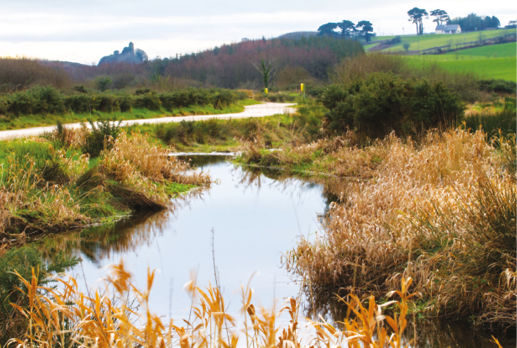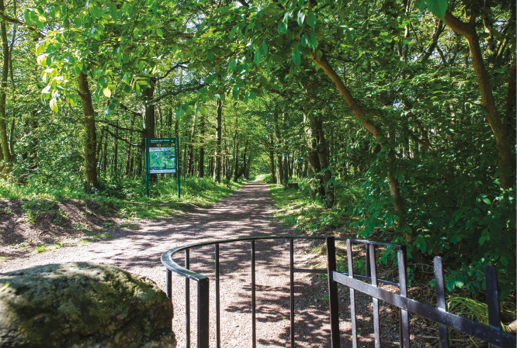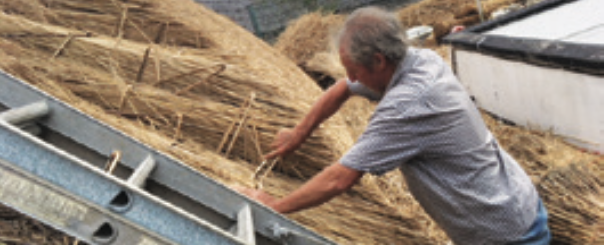Heritage and Culture
Waterford City & County has a rich and varied heritage which plays a key part in its identity and distinctiveness. The protection of our archaeological, built, cultural and natural heritage is vital to creating a better future for all.
Natural Heritage
Waterford contains a variety of sites of special conservation interest as they are considered to be internationally important under the EU Habitats Directive. Nine sites are designated for their value as habitats or species of flora or fauna e.g. the Rivers Suir and Blackwater and the Comeragh Mountains whilst Dungarvan Bay, Tramore Bay and the coast are designated Special Protection Areas for birdlife.
Conservation sites of national importance include Kilbarry Bog and Fenor Bog which are designated as Natural Heritage Areas. Connecting these sites are networks of ecological corridors important for biodiversity at a local scale e.g. small wetlands, woodlands, tree lines and hedgerows. The importance of these ecological stepping stones is recognised in Article 10 of the EU Habitats Directive. Other sites of natural heritage value protected in the Development Plan include, trees listed under Tree Preservation Order Geological Heritage Sites and scenic routes and views.
Green Infrastructure, Biodiversity
Green Infrastructure (GI) is used to describe the interconnected network of land and water all around us that sustains environmental quality and enrich our quality of life. GI contributes to the protection of both the urban and rural environments for people, biodiversity and ecosystems. GI can include nature conservation areas, parks, open space, rivers and floodplains, hedgerows and wetlands.
See images below for a good example of Green Infrastructure in the county in Dunhill – Annestown Valley.
Built Heritage and Archaeology
The built heritage includes a rich catalogue of archaeological and architectural structures including castles, country houses, churches, public buildings, town houses, historic shopfronts, thatched cottages, farm complexes, mills, quays and lighthouses. Many of these buildings are designated as Protected Structures (PS) and included on the Record of Protected Structures or are located within designated Architectural Conservation Areas (ACA).
Archaeological Sites and Monuments are recorded on the Record of Monuments and Places (RMP) which identifies the location of all known recorded archaeological monuments in Waterford City and County. The RMP also includes Zones of Archaeological Potential which indicates areas of potential archaeology within a given area.
Culture
Culture is an integral part of how we lead our everyday lives. It connects us through our rituals and traditions through our landscape, language, sport, food, song and dance. It roots us and gives us a sense of place. It assists our health and wellbeing, gives expression to our creativity and provides outlets for participation, engagement, reflection, celebration and entertainment for all citizens.
Creativity is increasingly been recognised as supporting innovation and economic development. The Creative Ireland programme and planned development of a creative industries ecosystem in the Waterford Cultural Quarter support cultural and economic growth including in employment, tourism and Waterford’s status as regional capital of the South East.
Heritage and Culture can all play an important economic role that promotes jobs, encourages tourisms and supports the hospitality sector of Waterford.
Key Information
Heritage Facts:

and biodiversity space within the city environment


Built Heritage Facts:




Gaeltacht Facts:




Culture Facts:




from Creative Ireland Programme
2017– 2022
to fund creativity and
development of creative communities)







- How can the development plan balance the need to maintain and enhance the quality, character and function of our natural heritage landscapes and seascapes while facilitating appropriate development?
- How can natural heritage and biodiversity be enhanced in your area/Waterford?
- What are the key features of biodiversity value and how can the development plan protect and enhance them?
- How can the development plan encourage and strike a balance between conservation and renewal, while facilitating the reuse/adaptation of protected structures that are underutilised or have fallen into disrepair?
- Our built heritage contributes to our sense of place; can we adapt historic buildings and find a sustainable reuse without losing unique character?
- How can the development plan assist the owners of historic structures in protecting and using their properties?
- Are there areas in your town/village that should be designated as an Architectural Conservation Area and if so why?
- Should any changes be made to the Record of Protected Structures and if so, why?
- How can the development plan support the linguistic and cultural heritage of the Gaeltacht in An Rinn and safeguard and promote culture in Waterford?
- What policies or actions should be included in the development plan to progress the Waterford Cultural Quarter?
- Can the development plan support cultural and creative industry and associated events and if so how?
